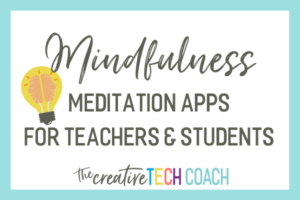Upon reviewing my interview and watching the videos, I at first had a little trouble determining any muddy points. The points that Brown (2010) and Veak (2010) each made are fairly clear. However, each raises questions for me because I do not think these points are always made clear in our public schools and institutions. Brown (2010) first touches on plagiarism. And while I am very careful and my first thought is, “I would never plagiarize,” I did not know about self-plagiarism until I started my graduate studies. I don’t think this is something that is widely known to most students. Brown goes on to discuss metadata and security breaches, as well. These are two points that I hadn’t considered much in my educational technology studies, but both are very important, especially as they pertain to student records and confidentiality, other possibly muddy points in some of our schools.
Veak (2010) goes into a deep discussion about using copyrighted works correctly. This is certainly a muddy area in our schools and institutions. Although I do believe at one time there was a sign up about copyright law in one of our work rooms, I have never been given any “professional development” on Fair Use, and I may have actually violated copyright law on an occasion or two, just because I thought it was “okay” because I was doing it for my students.Additionally, in my undergraduate studies, I actually had a professor suggest that I digitize illustrations from a story book to enhance a lesson. It was only after I did that I realized I may have violated copyright law. I have since found some useful guidelines offered by Stim (2015) on Stanford University Libraries’ website that clarified for me that it is okay to use images, as long as no more than 5 images by the same author are used.
As a future leader in the field of educational technology, I think it is important for me to make sure that I am observing Fair Use law. As Veak’s (2010) presentation cautioned, “as educators [and Christians] we need to provide guidance and set an example for students” (2:00) and our colleagues, as well. Moore and Ellsworth (2014) state that no matter whether or not the teacher thinks its ethical to use the material, if it violates the law just don’t do it! And I love Brown’s (2010) reminder to be above reproach and be blameless by thinking through our choices before making that click of a mouse. It echoes one of Paul’s letters to Timothy about the qualifications of Christian leaders (1 Timothy 3:1-13).
References
Brown, D. (2010). Ask the expert – Dr. David Brown [Video file]. Retrieved from https://download.liberty.edu/courses/deuwv.mp4
Moore, S. L., & Ellsworth, J. B. (2014) Ethics of educational technology. In J.M. Specter, M.D. Merrill, J. Elen, & M.J. Bishop (Eds.), Handbook of Research on Educational Communications and Technology (pp. 759-769). New York, NY: Springer.
Stim, R. (2015). Proposed educational guidelines on Fair Use [online article]. Retrieved from: http://fairuse.stanford.edu/overview/academic-and-educational-permissions/proposed-fair-use-guidelines/
Veak, T. (2010). Ask the expert – Dr. Tyler Veak [Video file]. https://download.liberty.edu/courses/vcpwh.mp4




5 Responses
Hey Ashley,
Good job on this! How might you instill Christian values in a public setting?
While it is not always easy to teach about Christian values in public education, the best way I've found is to "preach" by example. We cannot tell students to love as Jesus loved, but we can certainly love them the way Jesus does. Likewise, we may not know the heart of our colleagues and if they serve God, but we must always love them as we love ourselves, because anyone we can show mercy to is our neighbor (Luke 10:27-37). And we don't do these things just to show others we are Christians or only to teach Christian values, but to glorify God and bring others to know Him.
Hi Ashley,
You mentioned that you had not thought about self-plagiarism before. From talking with students and other teachers, it seems that is a common sentiment. After listening to Veak and reading Vern Wortman’s blog (vernewortman.blogspot.com), I took a look at the American Psychological Association’s (APA) Manual. The definition and explanations did help to make it clearer why this would be an issue. I started to think back on the many papers I have written and fortunately, I don’t think I have committed self-plagiarism, but is something that I will be more aware of.
I have thought a lot about the idea of being a good example for our students as well. It is difficult to expect our students to be concerned about copyright and to understand the laws and regulations if we, as teachers, do not know and respect them. In the technology environment that our students have grown up, it is easy to understand that they would have little concern about copying and pasting. I know I will be more aware for myself and my students in the future. I agree that we must teach by example, particularly in the public school setting, remembering that, in some cases, we may be the only Christian example our students have.
References:
APA Manual (Publication manual of the American Psychological Association) (6th ed.). (2010). Washington, DC: American Psychological Association.
Veak, T. (2010). Ask the Expert: Dr. Tyler Veak. Lecture video from Liberty University. Retrieved from https://download.liberty.edu/courses/vcpwh.mp4
Self-plagiarism is so confusing to me; I've heard a lot about intellectual property rights, and honestly, chalk my grad school papers up to that! You really offer good insights and share some really strong resources to help me better understand Copyright, Fair Use and self-plagiarism. I'm still not 100% clear on it, but I understand that just because I wrote it for one course doesn't mean I can use it in another. Thank you for sharing!
Hey Ashley,
Great post! I always enjoy reading your thoughts about the weekly topic. One point that you mentioned that I related most to was that of self-plagiarism. I always thought that my work was my work, no matter if I used it in one or five assignments. I understand the intent of instructors not wanting students to use multiple writings for the same assignment purposes, but I just don't agree with not being able to use your own work without quoting yourself. Anyway, this post isn't about our personal opinions, though, I guess.
I also really enjoyed how you related back the ethical and moral implications that Christians and human beings should think about while using other people's ideas and works. Most importantly, we need to show ourselves honest and genuine in Christ's eyes and demonstrate Christ-like behaviors, especially since there are so many who watch our every action. Thanks for the inspirational post, hope you have a great week!
Amanda